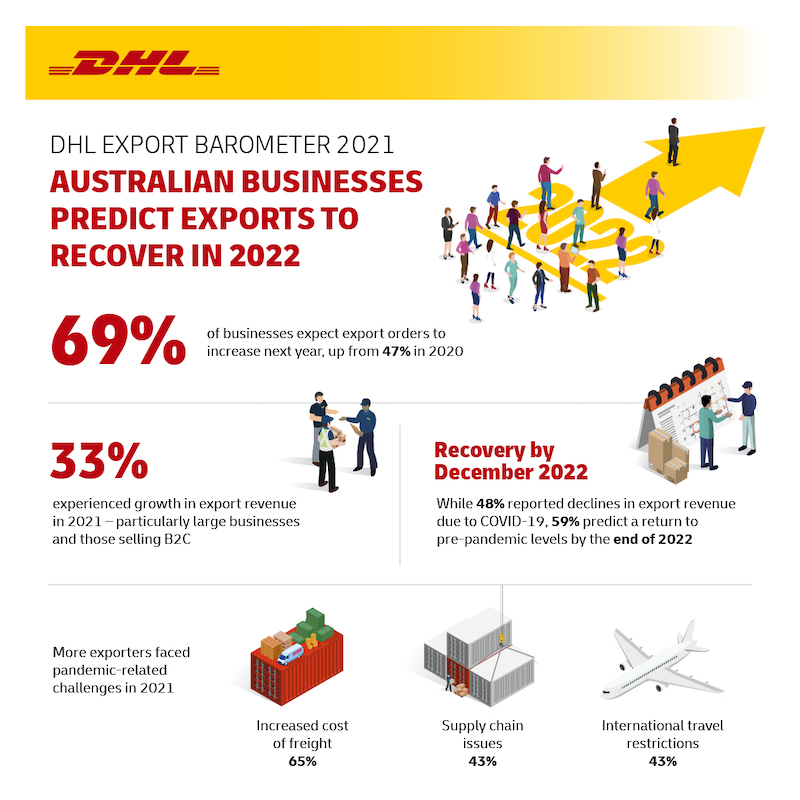THE results of the annual DHL Export Barometer signal a strong recovery in Australian exports. This year, 69% of Australian businesses surveyed believe that their export revenue is likely to increase in the coming 12 months – this proportion is on par with 2019 levels following a 19-year low of 47% of exporters in 2020.
The 19th edition was conducted by ACA Research, and surveyed 1438 businesses from the databases of DHL Express Australia and the Export Council of Australia between 1 and 22 September 2021.
Businesses highlighted a range of reasons for expected growth next year, including increases in customer demand, sales and marketing activities, and the launch of new products or services. This optimism extends to the number of businesses that plan to hire new staff (48%) and increase wages (57%) in 2022.
Reflecting on the previous 12 months, more businesses this year (45%, up 17% from 2020) reported growth in export orders. In terms of revenue, a third (33%) recorded a slight or significant increase, with large businesses and businesses selling to consumers more likely to report growth.
Although close to half of the exporters (48%) reported a slight or significant decline in revenue due to COVID-19 this year, the proportion was an improvement from 57% in 2020. Exporters based in New South Wales, the Australian Capital Territory, Victoria, and Tasmania were more likely to report a decline in export revenue. For businesses that experienced declining revenue in the past year, 59% expect export revenue to return to pre-pandemic levels by the end of 2022.
This year, more businesses encountered export challenges stemming from the pandemic. The increasing freight cost impacted 65% of businesses, followed by supply chain issues such as a shortage of products or raw materials (43%), and international travel restrictions (43%).
Gary Edstein, CEO and senior vice president, DHL Express Australia said, “International travel restrictions that created a shortage in airline cargo capacity in 2020 have created flow-on effects to the cost of freight and the ability of exporters to visit business contacts and manufacturing facilities overseas.
“Furthermore, as consumers have taken to e-commerce, export orders and demand for cross-border delivery services have grown exponentially.
“However, Australian businesses have remained steadfast, and it is positive to see more businesses in 2021 reporting growth.”
This year, the average number of export markets targeted by businesses dropped to 3.8, down from 4.4 in 2019-20. The most common export destinations included: New Zealand (targeted by 58% of businesses), followed by North America (52%), Europe (39%), and the UK (38%).
Looking to 2022, the most popular destinations businesses plan to target in their export activities are New Zealand (21%), North America (19%), Europe (18%), and the UK (18%).
In 2021, coinciding with the move to remote work and growth in online shopping, a record 82% of export businesses used e-commerce to generate sales orders, up 8% from 2020.






